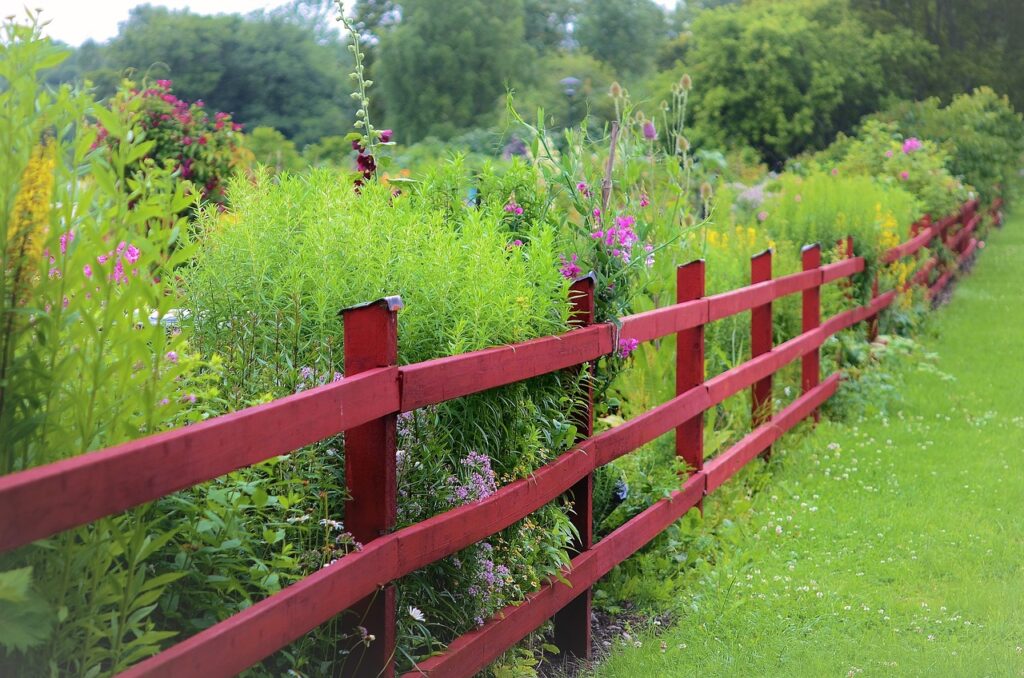
When it comes to enhancing your home’s curb appeal, choosing the right fence is about more than just privacy and security—it’s about making a statement. But what if your fence could make a statement for the environment as well? By opting for eco-friendly fencing materials, you’re not only protecting your home but also reducing your environmental footprint in a big way.
So, why settle for a traditional wooden fence that needs constant maintenance and contributes to deforestation when you could choose materials that are just as durable, cost-effective, and—let’s face it—way more sustainable? In this article, we’ll walk you through some of the best eco-friendly fencing options out there, from bamboo to composite materials, as well as how they can benefit your home, your wallet, and, of course, the planet.
Let’s dive in and explore the world of sustainable fencing!
What Makes Fencing Eco-Friendly?
Before we jump into specific materials, let’s take a moment to think about what truly makes a fence “eco-friendly.” When you’re choosing the perfect fence for your home, you want to consider a few key factors:
- Sourcing: Where does the material come from? Was it sustainably harvested or created from recycled products?
- Longevity: How long will the material last? A longer-lasting fence is better for the environment because it reduces the need for replacements and cuts down on waste.
- Maintenance: How much care and upkeep does it need? Fewer chemicals and less energy used in maintaining your fence means a lower environmental footprint.
- End-of-life: Can the fence be recycled, repurposed, or composted at the end of its lifespan?
With these factors in mind, you can choose fencing materials that not only serve your needs but also support sustainability. Now, let’s look at some of the top eco-friendly fencing materials that check all the boxes!
Bamboo Fencing: The Green Giant
If you’ve ever looked at bamboo and thought, “That would make a great fence,” you’re absolutely right! Bamboo is one of the most sustainable fencing options available today, and it’s rapidly gaining popularity with homeowners looking for a stylish, environmentally friendly alternative to traditional wood.
Why Bamboo?
Bamboo is a renewable resource that grows incredibly quickly—some species can grow up to 3 feet in a single day! This makes it an incredibly sustainable choice because it doesn’t take years (or even decades) to harvest. Plus, bamboo doesn’t require chemicals or pesticides to grow, so it’s gentle on the planet from start to finish.
When it comes to durability, bamboo doesn’t disappoint either. It’s naturally resistant to pests and weather conditions like rain and wind, making it a low-maintenance option. Bamboo fencing can last for many years without rotting or decaying, and it doesn’t splinter, which makes it safe for pets and kids.
What’s the Catch?
While bamboo is a fantastic eco-friendly option, it’s important to choose the right type of bamboo fencing to ensure it’s durable enough to withstand the elements. Look for bamboo that has been treated to resist termites and other pests, as untreated bamboo can be vulnerable to damage.
Overall, bamboo provides a natural, aesthetically pleasing fence that can enhance the look of your garden while minimizing environmental impact.
Bamboo’s Key Benefits:
- Fast-growing and renewable
- Low-maintenance and pest-resistant
- Natural aesthetic that adds beauty to your landscape
Composite Fencing: Sustainability with Style
Composite fencing is one of the most popular eco-friendly alternatives to traditional wood. Made from a blend of recycled plastic and wood fibers, composite fences are an excellent choice if you’re looking for something that’s both durable and low-maintenance.
What Makes Composite Fencing Eco-Friendly?
The key benefit of composite fencing is that it’s made from recycled materials, typically plastic and wood scraps that would otherwise end up in landfills. By repurposing these materials, composite fences help reduce waste and minimize the need for new resources. Plus, they’re highly durable, with most composite fences lasting 20 years or more without needing to be replaced.
Since composite fencing doesn’t splinter, rot, or warp like traditional wood, it requires little upkeep. You won’t need to spend your weekends sanding, staining, or painting your fence to keep it looking nice. It’s truly a set-it-and-forget-it option.
The Aesthetic Appeal of Composite Fencing
Beyond sustainability, composite fences also offer a variety of design options. Whether you prefer a sleek, modern look or a more traditional wooden appearance, composite fences come in a range of finishes and colors to match your style. They’re also resistant to UV rays, which means they won’t fade over time.
Composite Fencing Benefits:
- Made from recycled materials, reducing landfill waste
- Low maintenance—no sanding, staining, or painting required
- Durable and long-lasting (20+ years)
- Available in many styles and colors to suit any home
Recycled Metal Fencing: The Eco-Friendly Heavyweight
If you’re looking for something with a little more heft, recycled metal fencing is a great option. Whether it’s steel, aluminum, or wrought iron, metal fences are highly durable and can withstand even the harshest weather conditions. Not only that, but many of these materials are recyclable at the end of their lifespan, which makes them a sustainable option for eco-conscious homeowners.
What Makes Metal Fencing Eco-Friendly?
The environmental benefits of metal fencing come primarily from the fact that metals like aluminum and steel can be recycled over and over again without losing their strength. In fact, most of the metal used in new fences comes from recycled materials, so your metal fence could be made from materials that have already been used and repurposed.
Moreover, metal fences are incredibly durable. Aluminum is rust-resistant, which makes it a great choice for coastal areas, while steel is perfect for high-security areas. Wrought iron fences are elegant and long-lasting, providing both beauty and function.
Metal Fencing Benefits:
- Highly durable, resistant to rust and weather
- Recyclable at the end of its life
- Long-lasting, reducing the need for frequent replacements
Reclaimed Wood Fencing: Vintage with a Purpose
What’s better than a fence that’s both sustainable and unique? Reclaimed wood, which is salvaged from old buildings, barns, and other structures, is a great eco-friendly choice if you’re looking for something with character and a little history.
Why Reclaimed Wood?
The beauty of reclaimed wood is that it gives new life to old materials, helping to conserve natural resources. It’s also an environmentally responsible way to avoid the waste that comes from tearing down old buildings and structures. Since reclaimed wood is already aged, it tends to be more durable and weather-resistant than new wood.
A reclaimed wood fence adds rustic charm and an authentic, natural look to your landscape. Each piece of wood has its own unique grain, texture, and story, making your fence a one-of-a-kind addition to your property.
The Challenges of Reclaimed Wood
While reclaimed wood is an eco-friendly choice, it can be harder to find, and it may come at a higher cost due to the labor involved in salvaging and processing the wood. It’s also important to make sure the wood has been properly treated to avoid rot, termites, and other pests.
Reclaimed Wood Benefits:
- Reduces waste and conserves natural resources
- Adds unique character to your property
- Durable and weather-resistant, often more stable than new wood
Living Fences: A Natural Boundary
If you’re looking for something that really stands out, consider a living fence. These aren’t made from traditional building materials; instead, they’re created from plants, hedges, or shrubs. Not only do living fences help define your property, but they also promote biodiversity, provide natural insulation, and even reduce noise pollution.
Why Choose a Living Fence?
Living fences, such as privacy hedges or green walls, are a great way to blend nature with function. They can improve the overall health of your property by providing shelter for local wildlife, supporting plant diversity, and helping to manage stormwater runoff. And since they’re made from plants, they absorb carbon dioxide and release oxygen, contributing to a healthier environment.
Living fences also provide great privacy without the harsh, unnatural look of traditional fences. Depending on the plants you choose, they can create a lush, green wall that offers both beauty and protection.
Living Fences Benefits:
- Supports biodiversity by providing habitat for wildlife
- Natural insulation, helping to reduce energy costs
- Adds a green, natural aesthetic to your property
Conclusion: Choose the Fence That Fits Your Values
When it comes down to it, choosing eco-friendly fencing materials isn’t just about picking something that’s good for the planet—it’s also about making an investment in your home. Sustainable fences like bamboo, composite, metal, and reclaimed wood are long-lasting, low-maintenance, and stylish, offering the perfect combination of functionality and eco-consciousness.
By opting for sustainable fencing materials, you’re making a choice that supports a healthier environment and contributes to a greener future. Whether you go for the durability of composite, the beauty of bamboo, or the rustic charm of reclaimed wood, your fence will be more than just a boundary—it will be a reflection of your commitment to sustainability.
So, which fence will you choose? The planet—and your home—will thank you for it

